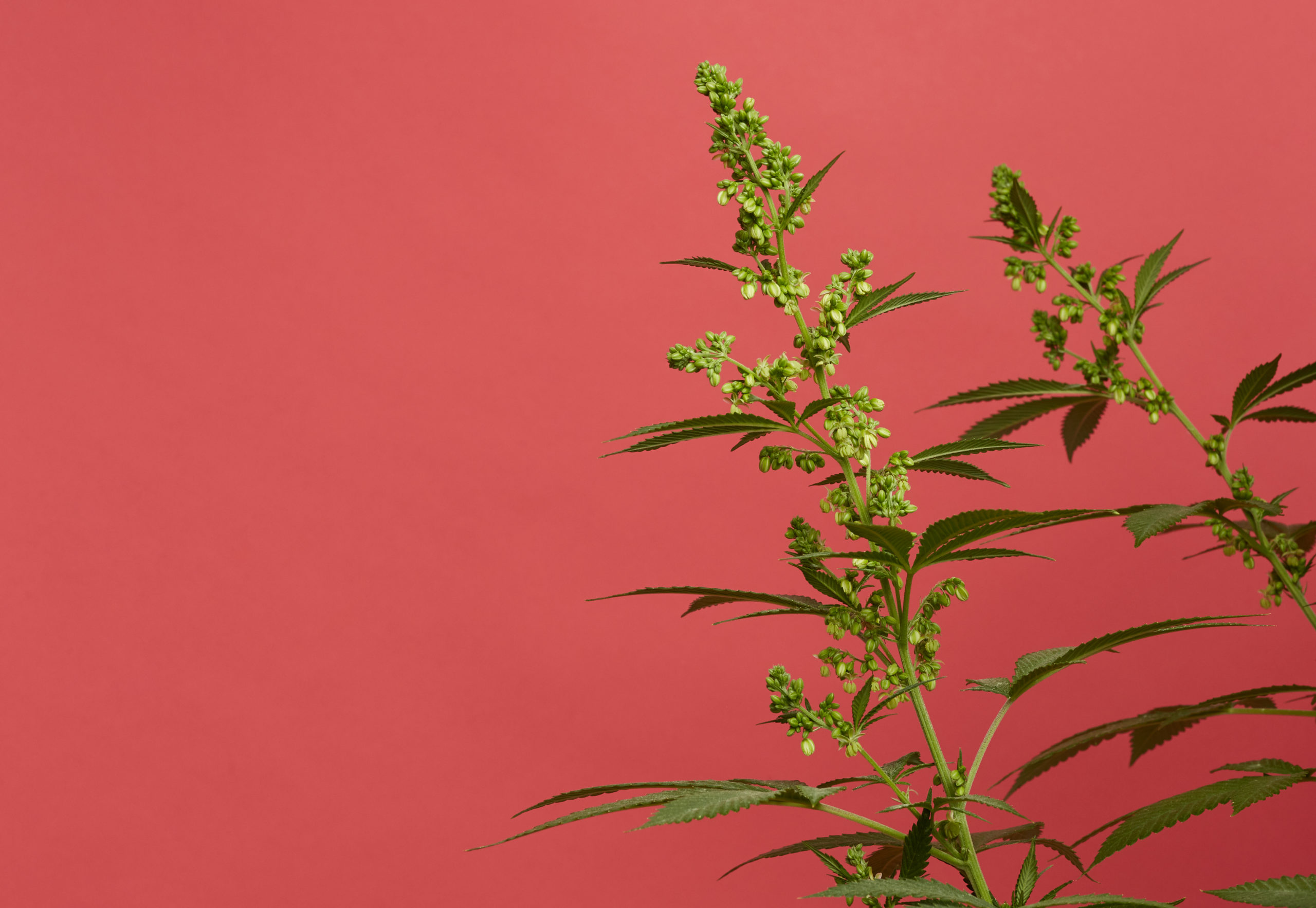A stamen is the pollen-bearing male reproductive organ of any dioecious plant, not just cannabis plants. Dioecious plants have male reproductive parts on some organisms and female reproductive parts on others, like humans. If a female plant matures in the presence of a male plant, when the stamens release pollen, it fertilizes the female cannabis flowers. Fertilized flowers contain seeds, which makes them less valuable in today's market.
A stamen, which is Latin for thread, consists of two parts. There's a tube-like filament, or stalk, as well as anthers, or pollen sacs, which are located at the end of the filament. The anthers produce and store pollen until it's ready to be released for fertilization.
Photo by: Gina Coleman/Weedmaps
What is the role of the stamen?
The stamen contains the male reproductive organs of the cannabis plant, which produce pollen. The male DNA of the pollen will be transferred to the female part of the cannabis flower, which allows for reproduction and, ultimately, a yield of cannabis seeds.
FAQ
What are cannabis pollen sacs called?
All pollen sacs, not just those on cannabis plants, are called anthers.
What is cannabis flower made of?
Cannabis flower is literally the dried and cured flowers of the plant. Anatomically, flowers consist of clusters of bracts called calyxes, which contain the ovum and stigma (together called the pistil). Flowers are typically covered in trichomes, which produce the resin that contains the cannabinoids and terpenes cannabis consumers crave.
What is the cannabis calyx?
Cannabis flower calyxes are clusters of bracts, which surround the female plant's reproductive organs.
Why do my plants keep herming?
All flora and fauna have an inherent drive to procreate in order to preserve their species. Cannabis is no different. Female plants will sometimes become hermaphrodites (with both male and female reproductive parts) in order to self-pollinate. The risk of herming increases when female plants experience environmental stressors, including:
- Too much or not enough water
- Not enough nutrients
- Too much heat
- Genetics
- Disruptions to the photoperiod
- Dramatic shifts in temperature
- Disease or pest infestations
- The use of toxic pesticides
- Physical damage from vigorous pruning
The plant is striving to self-pollinate so it can produce seeds to carry on its lineage before the stressor kills it. To reduce the risk of female plants herming and potentially ruining your entire crop, purchase feminized seeds from reputable dealers, check plants daily for signs of male flowers, and carefully care for your cannabis plants to avoid any environmental stresses.

